Written by Eugene (good traditions).
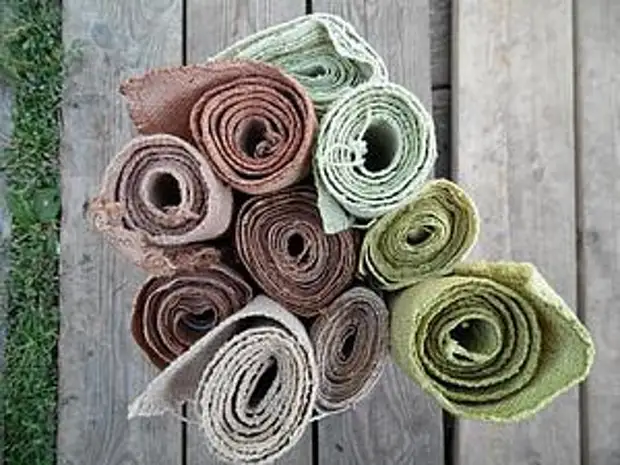
This summer, I finally managed to break the dyeing of fabric with natural vegetable colors. And it all started with the purchase of dominant of different textures. And I thought that the fabric woven with human hands is best suited for dyeing herbs, as it will absorb positive energy even more, will acquire a noble view ...
The master class submitted below is not a professional leadership, since I do not have many years of painting fabric. But I really want to share my experience, and maybe someone inspire someone.
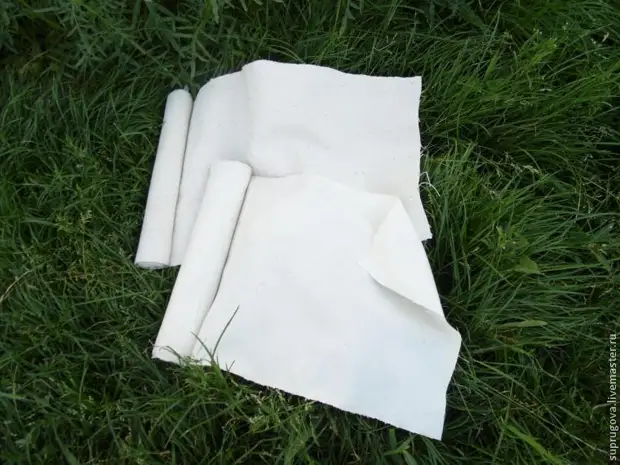
Collection of plant-dye can be carried out all year round, in those periods when there are more dye in the "coloring" parts of plants. In the spring, the leaves are torn (after their full disclosure). The roots of the plants are digging either in spring (shortly before the flowering of plants) or in the fall. But many plants retain the optimal coloring abilities all summer (stems and tomato leaves, carrots, potatoes, chorely, a hunter, etc.).
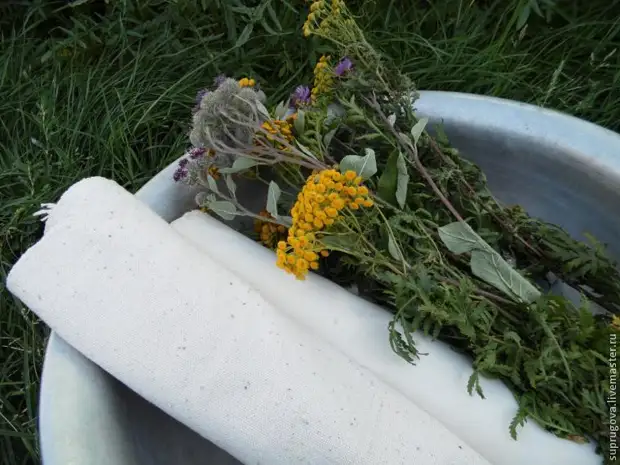
Pijma and stem Tomatoes.
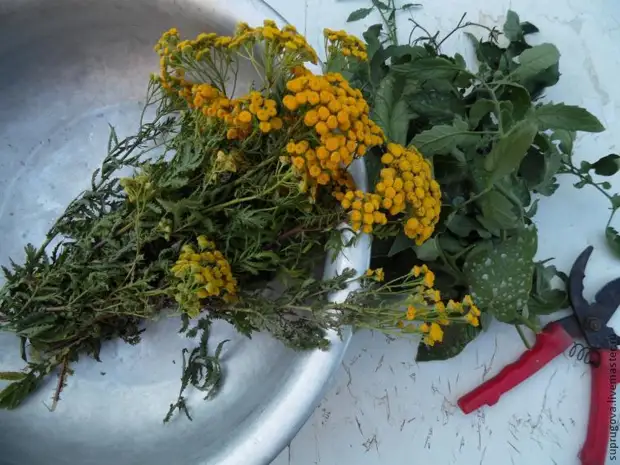
The collected plants must be crushed, pour water and boil. As a fixer for staining cotton fabric, a cook salt is used. But there are other fixers that enhance the coloring solution and the resulting color ( alum - white powder, apply when painting in "bright" colors, Copper Kuner — crystals which is blue-green Suitable for dark colors).
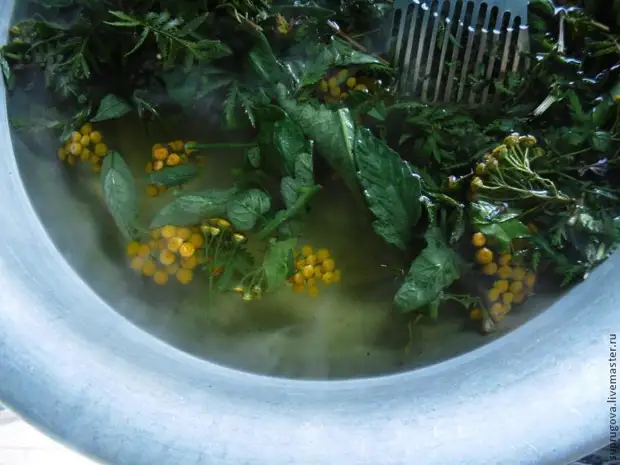
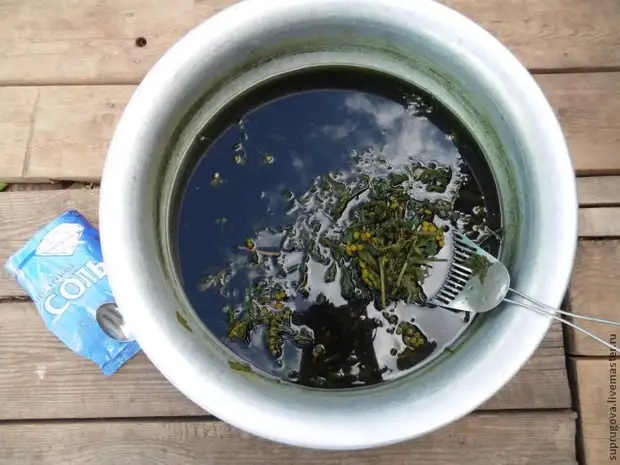
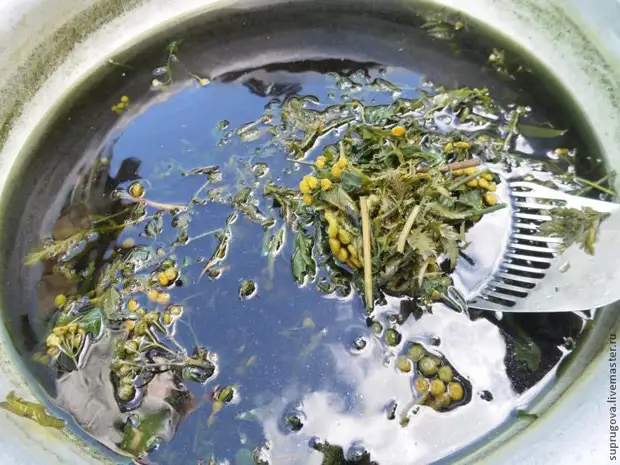
Sociable solution, it is best to leave cool all night with the plants, so they will continue and give all their coloring substances. The next day, it is necessary to remove all parts of plants from the water. Now the aqueous solution of the dye must be evaporated for more intense coloring and strain.
Fabric before staining must be pulled out and dry.
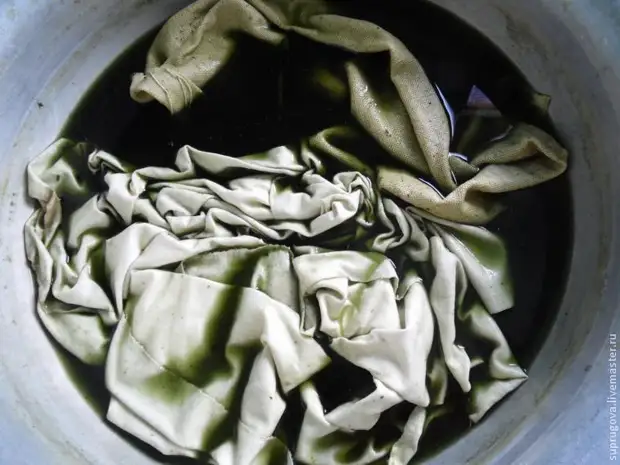
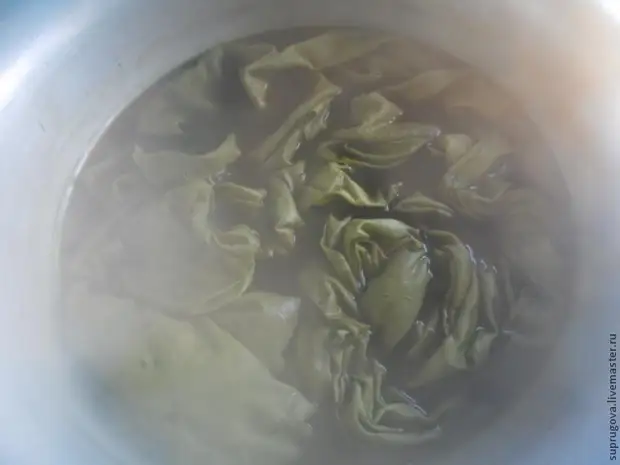
Pijma and stems of tomatoes gave a very beautiful rich green color, but it should be borne in mind that after rinsing and drying the color of the fabric faded.
Fabric cook after the boiling point within an hour. Then cool in the solution without removing the fabric, the longer it is to hold it, the more it will be punished. After that, cool the solution and rinse the fabric in running water several times. In the last rinse, add 2 tbsp. l. vinegar table or essence 1 tbsp. l. Vinegar will fasten the dye.
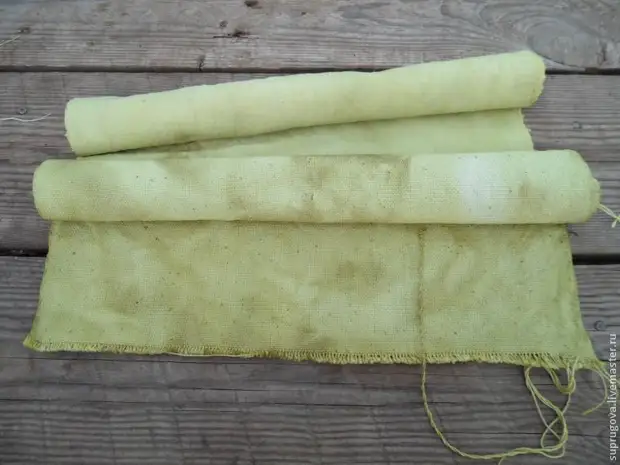
After rinsing and drying, you get such a fabric, a little unevenly painted, but it is even very suitable for this effect. In order for the fabric to be painted more evenly, it is necessary for dyeing the capacity of more and raw materials of plants, respectively, too.
Next, I want to show what shades are obtained when staining with other plants ... The technology is the same as described above.
Chabret and wormwood.
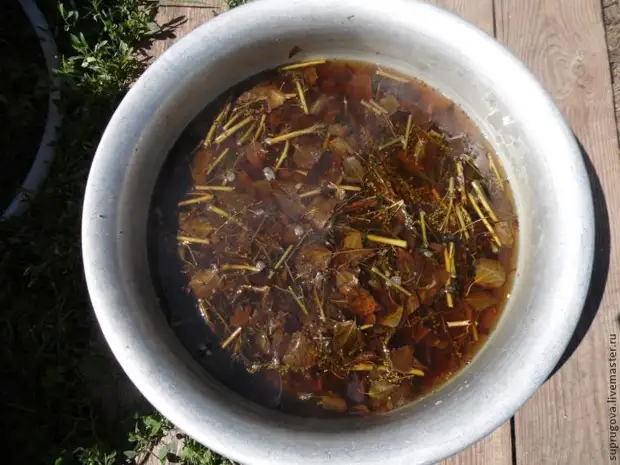
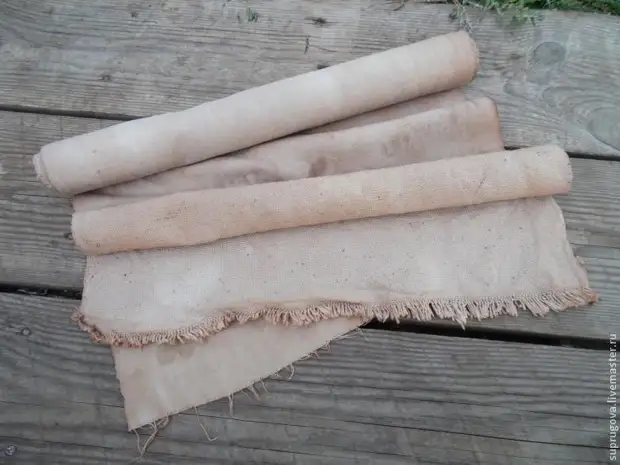
Leaves and stems of tomatoes.
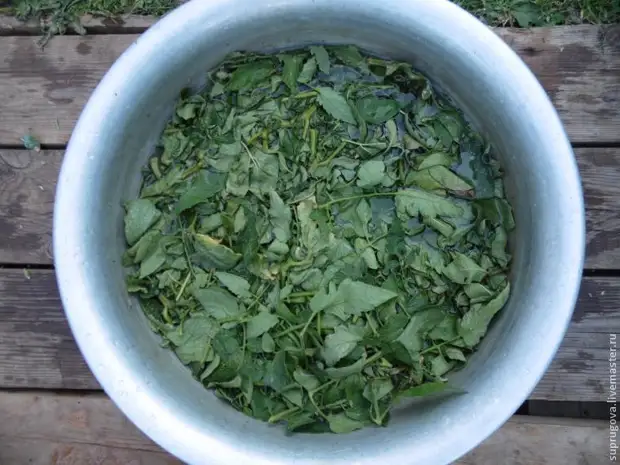
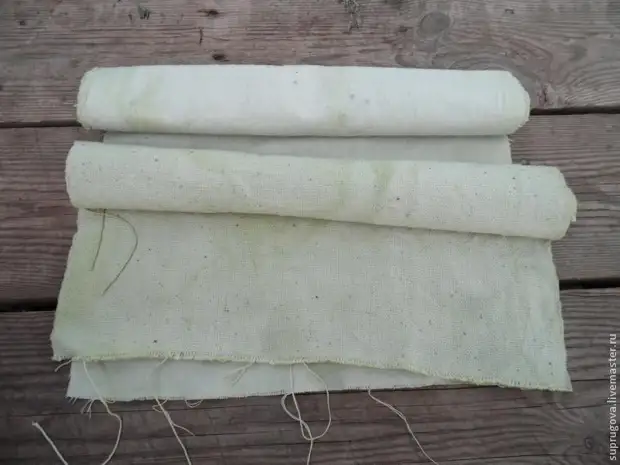
It turned out beautiful pollnaya green.
Dry layer husk.
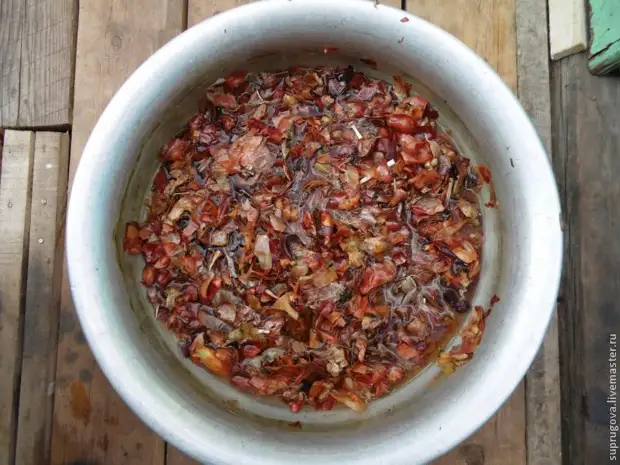
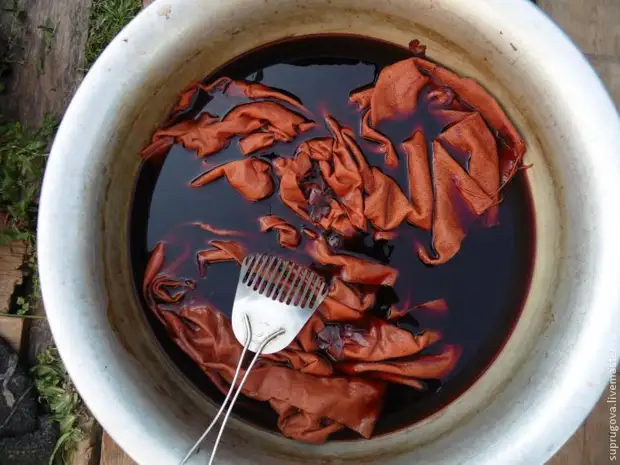
The decoction turned out very intense, but after rinse the fabric faded ...
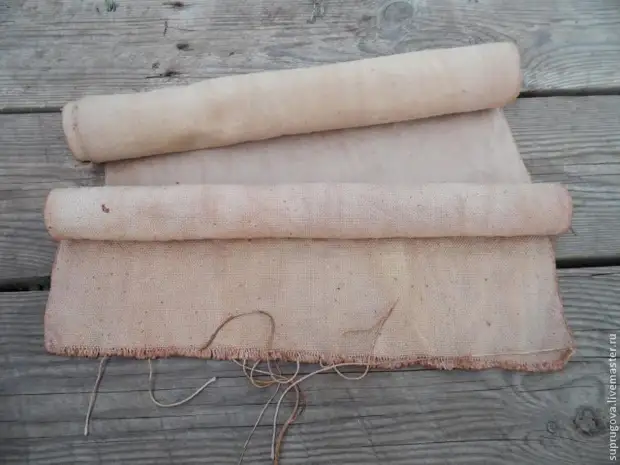
Black tea and St. John's wort.
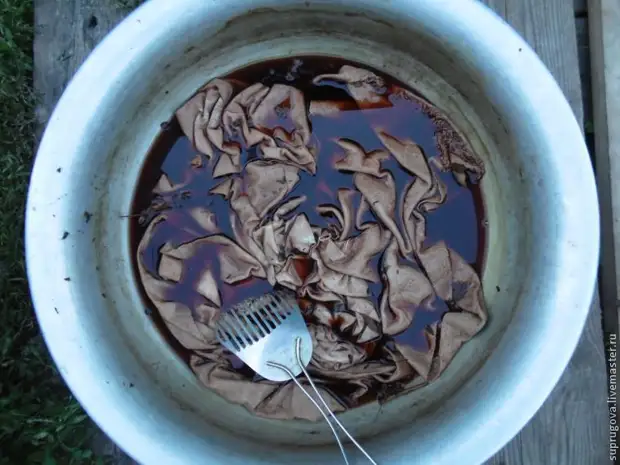
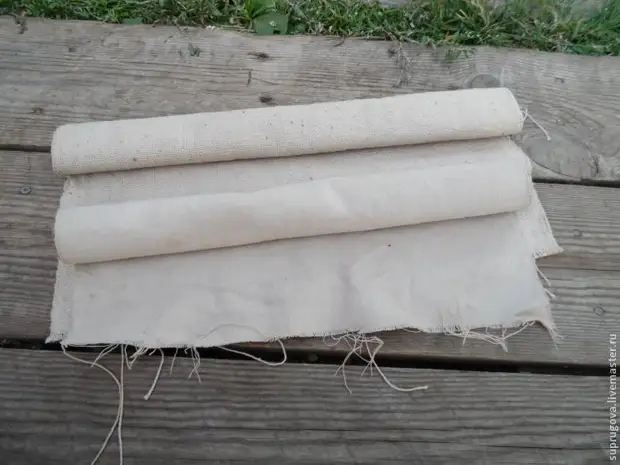
The overall result of dyeing. These fabrics are designed to create clothes to my dolls, and I think it will work out a very beautiful collection.
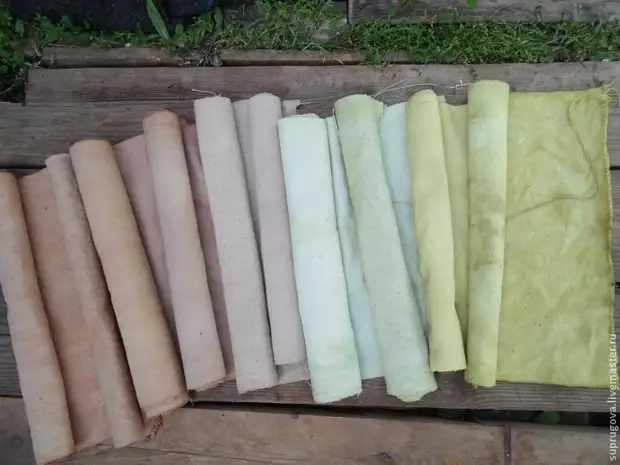
A source
